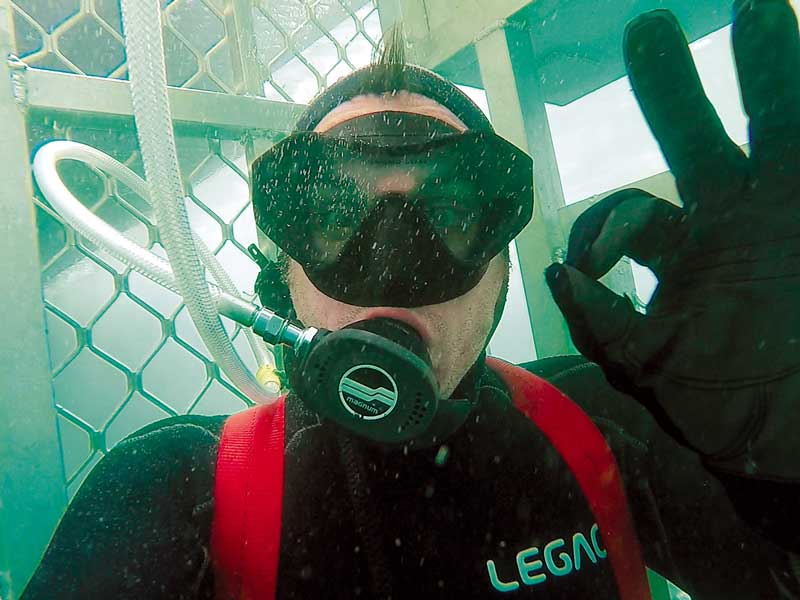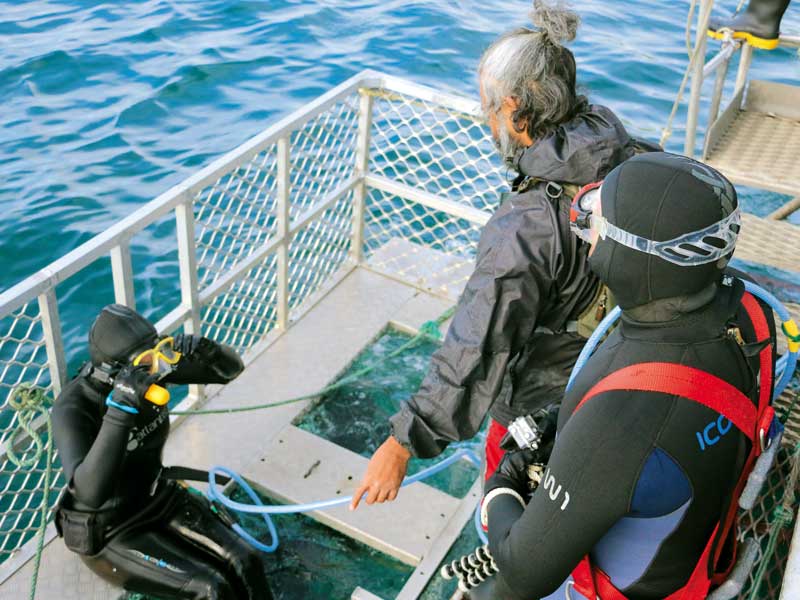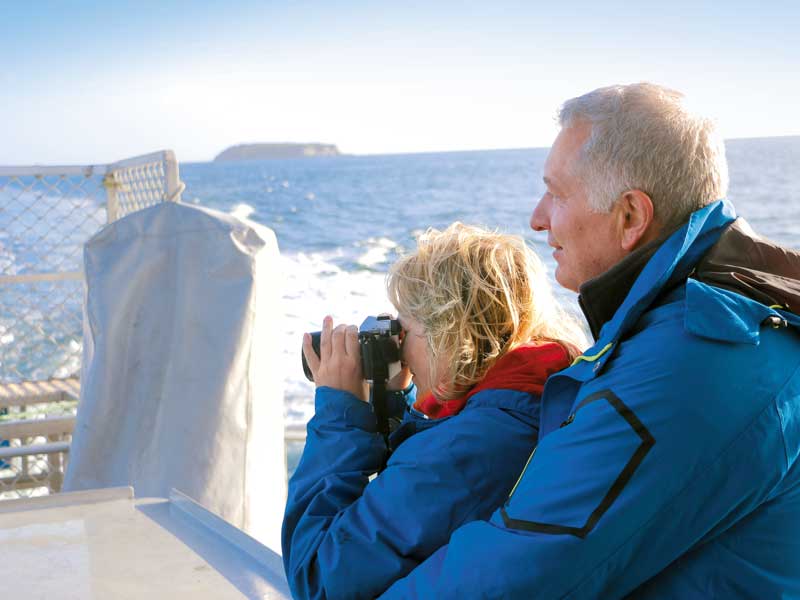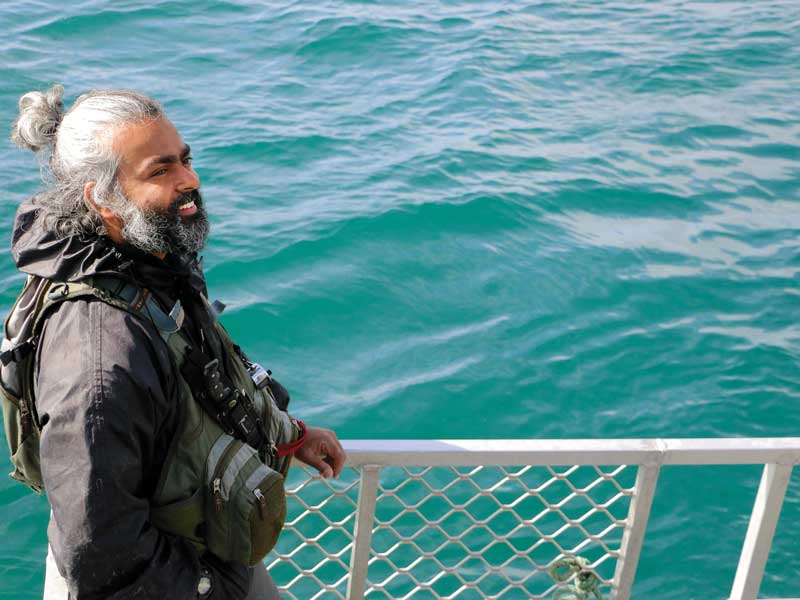When most people think of Bluff, their conceptions revolve around the much sought-after oysters considered to be the best in the world or as the most historic and southern most port town in New Zealand.
What many people might not know is that it’s one of the world’s hotspots for great white sharks (Carcharodon carcharias)—the world’s largest predatory fish, reaching up to six meters in length. Every year, great whites migrate here from the tropics around spring and tend to hang around Stewart Island until the winter months before setting back off on their journey to warmer shores. The local Department of Conservation estimated there could be more than 120 individual animals in the area off the northern Titi Islands, and that’s why I headed there, to see them up close and personal.
When Jaws burst onto the movie screens in 1975, the film shocked audiences with a terrifying monster, making them the most feared creatures of the sea to both sailors and sea inhabitants alike. Now, more than 40 years on, their population has been decimated partly due to the frightening and false ideas the film helped spread about them that has led to these predators being hunted worldwide. But not for me.
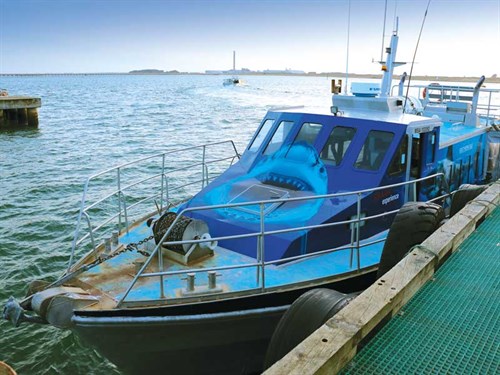
I’ve always had a fascination with sharks. They are awesome yet often misunderstood creatures, and shark cage diving became one of those bucket list items. My first cage dive was a more timid affair when I visited the aquarium of Kelly Tarlton’s. This only sparked my interest in getting out in the wild and seeing great white sharks in their natural habitat, so when the opportunity arose, it’s safe to say I jumped right in.
Shark Experience—the local DOC-approved operator I went with—has been operating in the region for more than 26 years and has a 100 percent safety record. Dive instructor Mike Haines was extremely helpful on the lead-up and was the skipper who took us out for this unforgettable day. With a distance of more than 1800km, getting to Bluff from Auckland was no quick task. I flew to Dunedin and hired a car for the remaining 230km journey. This is a great option to save some extra money on a flight into Invercargill, not to mention being able to enjoy the countryside of Southland along the way.
Upon arrival, I checked out the iconic Sterling Point signpost, grabbed some dinner, checked out the view from the top of Bluff Hill, and headed to the hotel to prepare myself for what lied ahead.
Although I’ve never suffered from motion sickness before, I had picked up some Sea Legs after following suggestions online. After all, you can never be too prepared for a choppy sea. The next morning, I awoke bright and early to blue skies and headed along to our meeting point at 7am, was checked in promptly, and walked over to the harbour where Mike and his crew pulled up in their boat—the Southern Isle—fittingly covered in shark prints.
We had a wide range of thrill-seekers along for the trip; a diverse age group of shark lovers, all keen to get up and close with these wild animals. There was excitement in the air. We were given a safety briefing before setting sail across the bumpy ocean to Stewart Island to pick up more passengers.
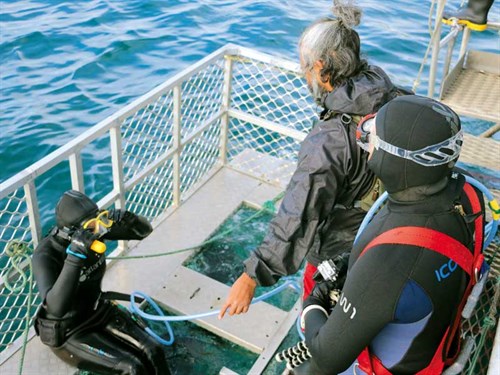
We moored up just off Titi Islands and were given a brief introduction to scuba by one of the crew members. Everyone got their wetsuits on, the cage was lowered, some chum (ground up fish) was tossed into the ocean, and then the wait began.
Sharks have an incredibly acute sense of smell that allows them to detect potential prey from great distances, so it was only a matter of time before something showed up. In the distance, a black figure emerged from the depths. Was it a shark? Not this time, but seeing a seal make a dash towards the island surely had to be a good sign.
Suddenly, we spotted our first great white. This large creature swam up inquisitively as the first divers rushed into the tank to have a look. Those left on the boat moved to the side with their cameras eager to make the most of the opportunity but just as quickly as the shark had appeared, it swam off into the distance and the water became eerily still again. After some time, it was my turn, and I was called to descend into the cage and slowly make my way down the ladder into the big blue. Initially, the water might be chilly but that quickly disappears when the adrenaline kicks in and you’re faced with the open water ahead of you and a sign that tells you to keep your body parts within the cage at all times. I locked my feet into the foot strap to try and prevent turbulence and looked out straight ahead of me as a tuna-head on a rope was thrown out to entice any hidden visitors out to play.
There you wait with anticipation. The odd fish appears and swims off raising expectations of what’s really going on, and then out of nowhere, a great white appears and your pulse rate spikes. It must have been four to five metres long, and there’s nothing you can do butlook ahead in awe; those big black eyes stare back at you and the teeth are on full display.
Over the course of the day, we enjoyed another three to four visitors. On the deck, lunch, snacks, and hot drinks were provided before we wrapped up and headed back to the shore. Most of the divers fell asleep, satisfied and most likely dreaming of the sharks they had encountered earlier. Mike and his team kept the group upbeat and spread their knowledge about sharks, the local area, and their obvious passion for the conservation and protection of the great white sharks.
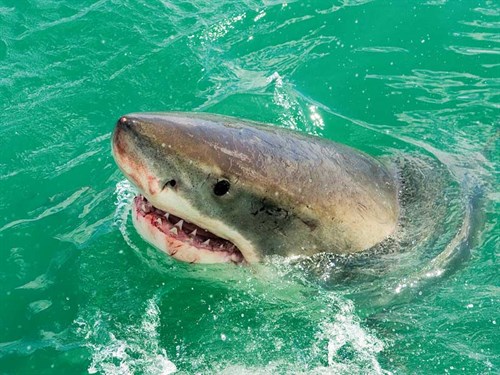
For many, this is a bucket list item, and with good reason, it is one of those experiences that can’t be matched and something that will stay with you for years to come. If you ever find yourself in the region or in need of an adrenaline rush, you can’t beat it.
I’d like to thank Mike and the fantastic team at Shark Experience NZ for their professionalism in giving everyone memories that will last a lifetime.


